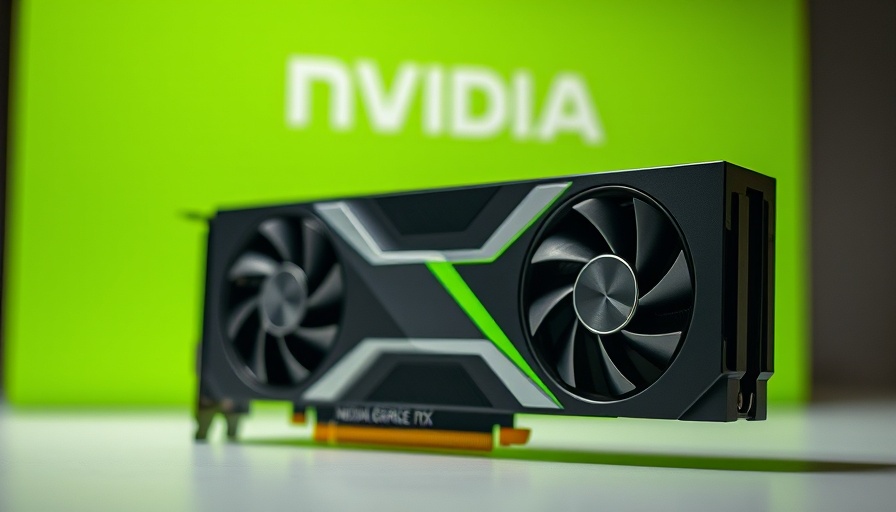
Will NVIDIA's Strategic Moves Fuel AI Enthusiasm?
NVIDIA Corporation (NVDA) is at a fascinating juncture, poised to leverage the booming artificial intelligence (AI) landscape. With the company's revenue growth soaring over 94% year-on-year, a common sentiment in tech circles now revolves around whether NVIDIA can sustain its momentum or face headwinds amid increasing competition and geopolitical tensions.
Unpacking NVIDIA's Growth Factors and Market Position
NVIDIA’s supremacy in the semiconductor realm largely stems from its strategic innovation in AI technologies, particularly its high-performance Graphics Processing Units (GPUs). As demonstrated by a staggering revenue increase of 152.44%—recorded within just the last twelve months—the market clearly recognizes NVIDIA's commanding lead in AI applications. Currently, NVIDIA boasts a gross profit margin of 75.86%, indicating its robust operational efficiency and financial health, signaling a readiness to capitalize on future AI demands.
The Bull Case: Driving Forces Behind NVIDIA's Potential
As detailed in recent analyses, NVIDIA's anticipated launches, specifically the Blackwell architecture and RTX 50 Series GPUs, are expected to energize both gaming and AI sectors significantly. With the RTX 5090 predicted to double the performance of its predecessor, NVIDIA is set to launch products that can inspire a wave of upgrades across sectors bolstered by AI innovation.
Moreover, with projections indicating that AI accelerators could capture 75% of a $380 billion market by 2028, NVIDIA’s established technology stack—including advanced chips and software—positions it favorably to capture significant market share. Analysts are currently projecting substantial revenue growth reaching upwards of $242 billion by fiscal year 2027, showcasing NVIDIA's potential to ride the AI wave beyond gaming and into broader applications.
Potential Risks and Competition: A Dual-Edged Sword
However, the narrative doesn't come without cautionary notes. NVIDIA faces increasing competition from tech giants like Amazon and Google, which are diligently working on developing their custom AI chips. The arrival of specialized AI applications may contribute to diminished demand for NVIDIA’s high-performance GPUs.
Furthermore, geopolitical tensions, particularly concerning trade with China and reliance on third-party manufacturers, pose risks to NVIDIA’s operational capabilities, with export restrictions potentially undermining market access. The cyclical nature of the semiconductor industry, along with potential slowdowns in gaming, adds layers of complexity to NVIDIA's extended growth story.
Future Oversights and Market Sentiments
The real question remains: Can NVIDIA sustain its growth amidst evolving market dynamics? The consensus among experts hints at a bullish outlook, driven largely by their significant market position and endless innovation possibilities. The culmination of wider industry capex focusing on AI infrastructure—reaching into hundreds of billions—offers a promising foundation as Big Tech continues to invest in NVIDIA's product lineup.
Final Thoughts: What Lies Ahead for NVIDIA?
As AI and machine learning continue to gain traction, NVIDIA's role is not merely that of a chip manufacturer; it's morphing into a pivotal player shaping tech's future. For AI enthusiasts, understanding NVIDIA's strategic maneuvers, market positioning, and the broad landscape of challenges and opportunities, is crucial in discerning the stock's trajectory moving forward.
 Add Row
Add Row  Add
Add 




 Add Row
Add Row  Add
Add 

Write A Comment